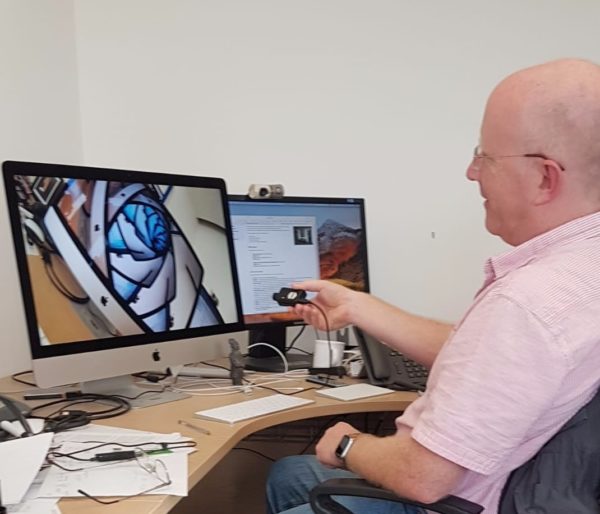Over lunch yesterday, my friend Richard was expanding my limited knowledge of spherical cameras: cameras which can take an all-round image – or even video – of the world; an immersive view which you can then explore in a VR headset, or by holding up your phone and moving it around, or (suboptimally) in a regular browser window by dragging around with your mouse, StreetView-style.
Richard’s done a nice blog post about this, from which I’m shamelessly cribbing! Thanks, Richard!
The normal way to get high-resolution all-round footage is to use a special rig like this one:
These are actually not that expensive… assuming that you already have ten GoPro cameras lying around ready to go in them. If not… it’s a different story.
But there are now more compact and affordable options if you don’t mind sacrificing some resolution – things like the Ricoh Theta V. For more information about how it works, Richard pointed me at this great video:
Now, we all know that you can get interesting feedback effects when, say, standing in a lift or changing room with mirrors on opposite walls, or by pointing live cameras at their own output.
What happens when you explore the same ideas in a spherical world? Cool things:
Oh, and if you’re like me, the next question is, “Can you do this kind of thing with live footage?” And the answer is yes. Here’s… ahem… a recording… to prove it…
A final thought.
In the old days, some comedy shows would emphasise that they were “recorded in front of a live audience”, so that you knew that the laugh track wasn’t canned. Soon, we’ll be able to recreate the effect of a live audience so realistically that it won’t be sufficient to persuade you that the recording was actually done in front of real people. Even if you have multiple spherical recordings.
So here’s a challenge to ponder over the weekend: How could you prove that a YouTube video of an event was originally a real event, shown to real people?

